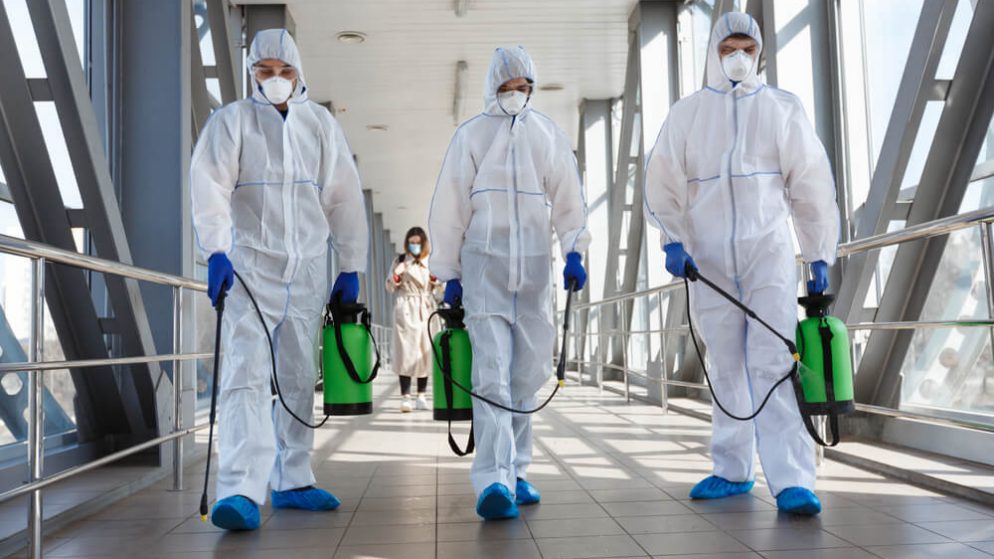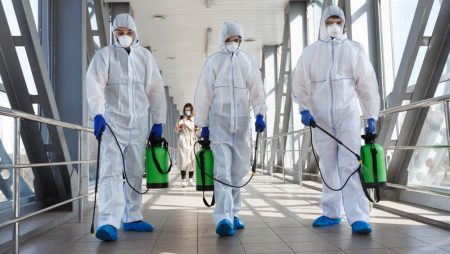



Get new exclusive access to healthcare business reports & breaking news




With firms trying to persuade employees that they’re doing their best to stop the virus from spreading, now is a better time than ever to get closer to the professional cleaning services process. In the past, cleaning was merely a matter of routine, carried out primarily for the sake of appearances.
The commercial cleaning business has hitherto been fragmented, unregulated, and unprepared to deal with demand spikes. Even established cleaning firms do not always use the best chemicals available, use the proper processes, or have suitably qualified workers due to the industry’s lack of oversight. The coronavirus pandemic caused significant shifts in how we think about cleaners and their output. Candidates and contractors will be subjected to more thorough screenings to ensure that they are knowledgeable about the cleaning procedure and have received the appropriate training. Are they, for example, certified to perform the required work? What disinfection will they use, and how effective will it be against viruses?
The cleaning industry, by all indications, is booming. By 2022, the sector is predicted to rise by 6.2 percent to $74,299 million. With new buildings springing up worldwide and the United States’ building square footage anticipated to grow by 39% by 2050, there will be plenty of cleaning work to go around. However, despite the industry’s potential for expansion, it is currently experiencing a crisis. In a world where automation is being used to drive efficiency and growth across many sectors, the commercial cleaning industry has fallen behind on the technology required for the future of cleaning.
Cleaning is still a very manual activity with no meaningful performance indicators and is dependent on labor availability. Labor costs are rising uncontrollably, accounting for up to 70% of operating expenses for most commercial cleaners, and the skill gap is widening, with most cleaning companies having a 200 percent average turnover. In addition, millennials, more than any other generation, expect to work in digital and technology-related fields. As a result, cleaning positions, which have previously lacked technical knowledge, are becoming increasingly difficult to fill.
Commercial cleaning firms face more than just workforce issues. Client demands are rising as well. While this is a problem that affects many service-based sectors, the cleaning industry is particularly affected. When choosing a commercial cleaning firm, there are many options. With building owners and managers putting tenant expectations first, it only takes one misstep to lose a client.
Today, one of the top three difficulties cited by office workers is janitorial issues. However, with top cleaning businesses having 1.3 percent margins and nearly 40% of commercial cleaners stating that bids are won on price, providers are anticipated to boost the value of their services while racing to the bottom on prices. The drive to supply cheap pricing is at odds with the pressure to deliver a cleaner environment. Clients’ top goal is an enhanced facility image followed by a reduction in cleaning expenses.
Sustainability is more than a phrase; it motivates several economies throughout the world to set lofty sustainability goals. Emissions must be cut in half by 2030 and eliminated by 2050 to keep global warming to a minimum. As a result, businesses must assess their carbon footprint and sustainability initiatives to determine where they are overexposed to climate risk and underexposed to the chance to go green.
The cleaning business is undergoing a dramatic transformation in response to client demand for greener products, more social responsibility standards, and a commitment to sustainability by service providers. Sustainability focuses on satisfying current needs in a way that does not jeopardize future generations’ ability to meet their own needs. While green initiatives are already taking shape, commercial cleaning companies have more potential to improve.
The use of biological products and safer processes for both the environment and human health is fundamental to sustainable cleaning. Eco-friendly cleaning products can help fight ozone depletion and climate change in the future by reducing air and water pollution. Furthermore, cleaning companies can adopt developing technologies such as Pulse Mops, washable microfiber mop heads, and cloths, which use less water and laundry materials, reducing waste across the board. From a financial standpoint, this provides cleaning professionals with a lot of cost savings and lowers the organization’s environmental effect.
Even though many forecast a grim economic future, we are optimistic. Yes, workplaces may have fewer people working in them daily. Still, new industries and enterprises will emerge due to the harm done to our economy over the last year and a half. As in the past, our industry will change and adapt. Some areas will expand, while others will contract. Still, there is every reason to be hopeful about the cleaning industry’s future if we maintain a good attitude and respond to our clients’ needs.